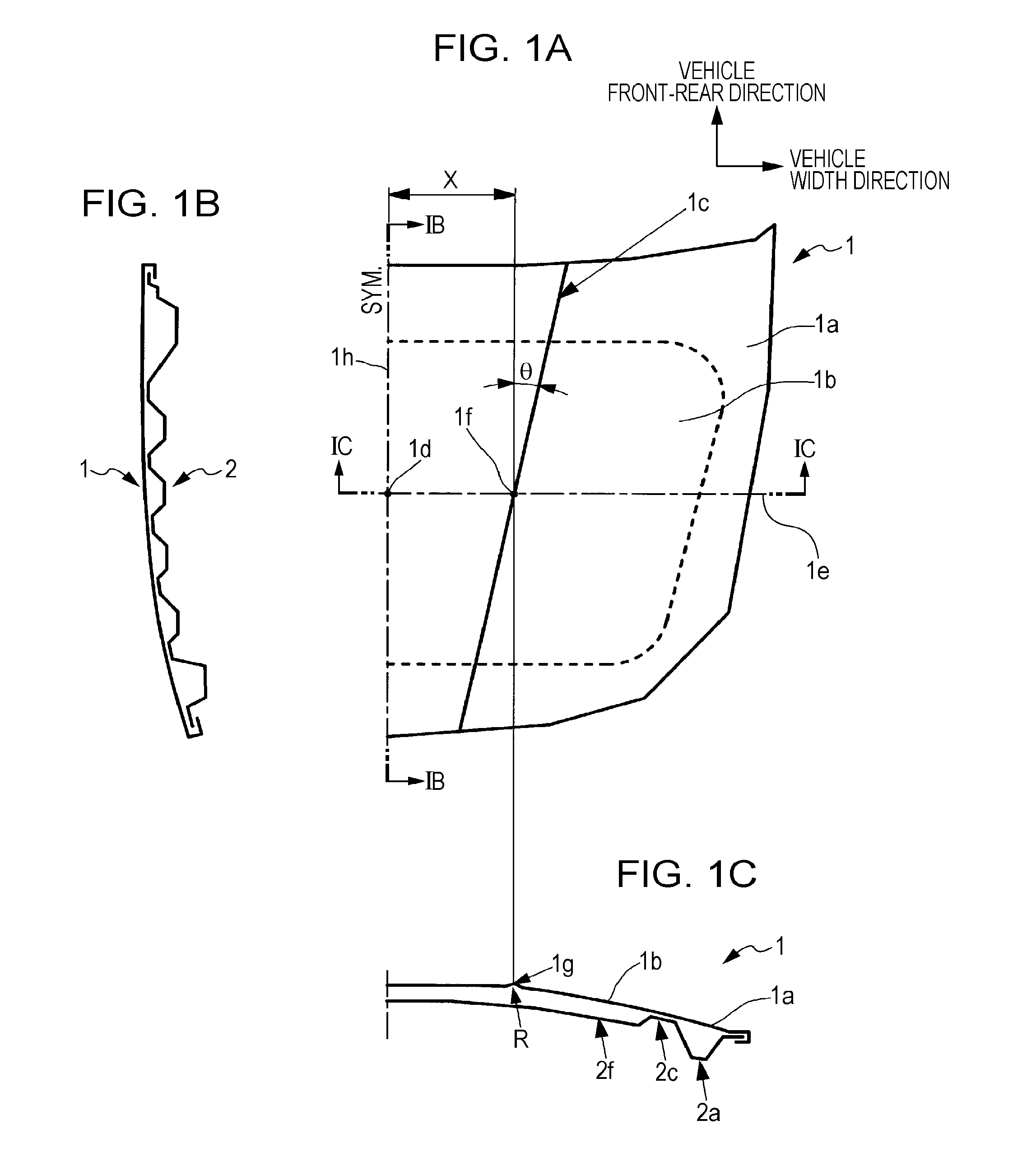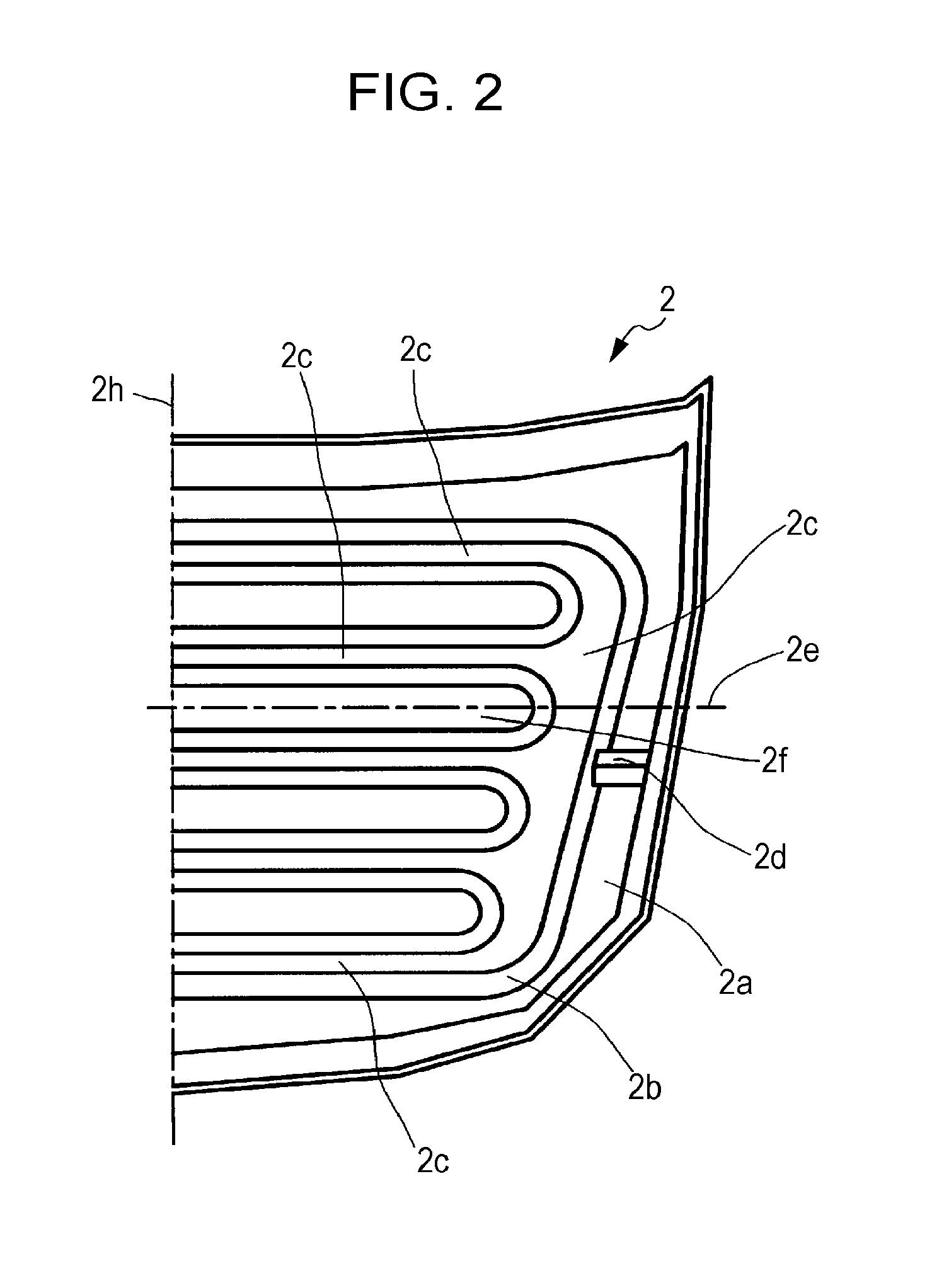Vehicle hood structure
a technology for hoods and vehicles, applied in the direction of vehicle components, pedestrian/occupant safety arrangements, superstructure sub-units, etc., can solve the problems of reduced absorption of collision energy, high deformation stiffness of beads in the vehicle front-rear direction against a front collision load, and reduced deformation stiffness of beads in the vehicle front-rear direction, etc., to achieve increased deformation resistance of the hood outer panel, the effect of increasing the propagation of stress in the vehicle front-
- Summary
- Abstract
- Description
- Claims
- Application Information
AI Technical Summary
Benefits of technology
Problems solved by technology
Method used
Image
Examples
embodiment
[0026]FIGS. 1A to 1C illustrate a vehicle hood structure according to an embodiment of the present invention, and out of FIGS. 1A to 1C, FIG. 1A is a plan view of the vehicle hood structure, FIG. 1B is a sectional view of the vehicle hood structure illustrated in FIG. 1A taken along line IB-IB illustrated in FIG. 1A, and FIG. 1C is a sectional view of the vehicle hood structure illustrated in FIG. 1A taken along line IC-IC illustrated in FIG. 1A. FIG. 2 is a schematic perspective view of a hood inner panel of the vehicle hood structure illustrated in FIG. 1A (with a hood outer panel removed). FIG. 3 is an explanatory view of three impact points (may also be referred to as “pedestrian protection performance test points” hereafter) where impact is applied to the vehicle hood structure, the impact points being indicated on the hood inner panel illustrated in FIG. 2. FIG. 4 is a waveform chart illustrating the relationship between a stroke and acceleration at three impact points illustr...
example
[0034]According to an example, the hood outer panel 1 illustrated in FIG. 1A is provided with the character lines 1c each provided on a corresponding one of the left and right sides. The vehicle-width-direction distance between the intersection point 1f of each of the character lines 1c and the central point 1d is 150 mm and the angle θ relative to the character line 1c is 10°. The hood outer panel 1 is coupled to the hood inner panel 2 illustrated in FIG. 2 by mastic. The radius of curvature R of the projecting top portion 1g of the character line 1c is 8 mm. With the vehicle hood structure having such a structure, when the head collides with three pedestrian protection performance test points (a, b, and c) as illustrated in FIG. 3 as described above, the relationship between the acceleration and the stroke applied to the head of an pedestrian is as illustrated in FIG. 4.
[0035]By adopting a structure such as the structure of the present example, when the head collides with a region...
PUM
 Login to View More
Login to View More Abstract
Description
Claims
Application Information
 Login to View More
Login to View More - R&D
- Intellectual Property
- Life Sciences
- Materials
- Tech Scout
- Unparalleled Data Quality
- Higher Quality Content
- 60% Fewer Hallucinations
Browse by: Latest US Patents, China's latest patents, Technical Efficacy Thesaurus, Application Domain, Technology Topic, Popular Technical Reports.
© 2025 PatSnap. All rights reserved.Legal|Privacy policy|Modern Slavery Act Transparency Statement|Sitemap|About US| Contact US: help@patsnap.com



